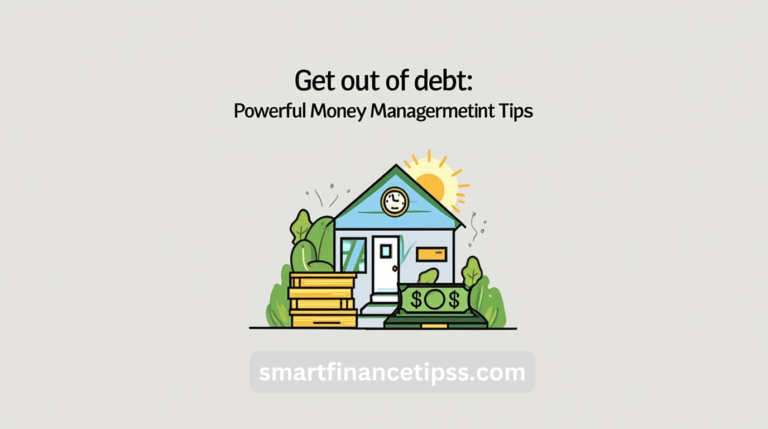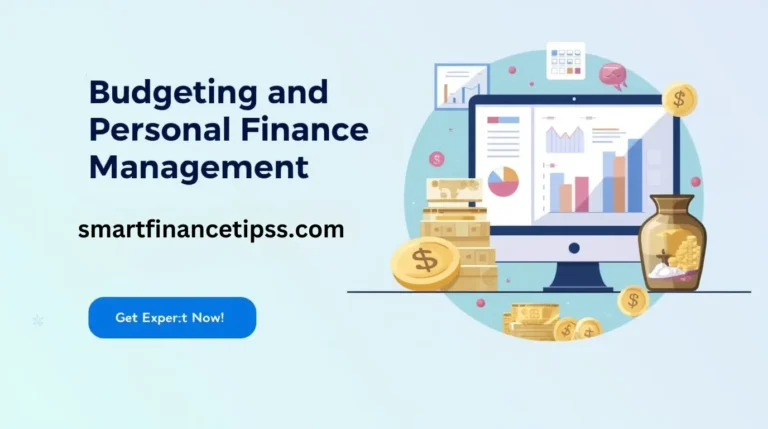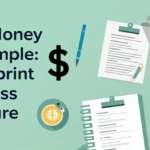The Best Fluffy Pancakes recipe you will fall in love with. Full of tips and tricks to help you make the best pancakes.
Table of Contents
Introduction to Money Manager Apps

In recent years, the landscape of personal finance management has experienced a significant transformation, largely driven by the advent of technology. Money manager apps have emerged as essential digital tools that assist individuals in budgeting, expense tracking, and financial planning. learn: Importance of Savings: How to Build Wealth One Step These applications serve a crucial purpose by enabling users to gain a clearer understanding of their financial status, empowering them to make informed decisions regarding their spending and savings.
At their core, money manager apps are designed to simplify the process of monitoring one’s financial activities. Users can easily input their income and expenditures, categorize expenses, and visualize their financial habits through user-friendly interfaces and analytical tools. By connecting to bank accounts and credit cards, these apps provide real-time insights into spending patterns, helping users identify areas where they can cut back or allocate funds more effectively.
The rise of digital finance tools has coincided with a growing awareness of the importance of financial health. More individuals are seeking ways to enhance their financial literacy and take control of their budget management. As a result, money manager apps have gained popularity among various demographics, providing tailored features that cater to the needs of students, families, and professionals alike. From tracking daily expenses to setting long-term financial goals, these applications are designed to facilitate a proactive approach towards personal finance.
Among the numerous benefits of using money manager apps, their ability to streamline budgeting processes stands out. With features such as automated expense categorization and alerts for overspending, users can effortlessly maintain their financial health. Additionally, many apps offer cloud synchronization, ensuring that users have access to their financial data across multiple devices, further enhancing convenience and usability.
Key Features to Look for in a Money Manager App
Choosing the right money manager app is crucial to maximizing your financial health. There are several key features that can significantly enhance user experience and help you manage your finances effectively. One of the primary functionalities to consider is budget tracking. An app should allow users to create and monitor budgets, helping them understand their spending habits and make necessary adjustments to achieve their financial goals.
Expense categorization is another essential feature. This capability enables users to organize transactions into specific categories, such as groceries, utilities, and entertainment, thus providing a clearer overview of where money is being spent. A comprehensive financial report generated by the app can offer valuable insights into expenditure patterns, presenting a snapshot of financial status.
Goal setting is also a vital aspect of successful money management. Look for apps that allow users to set short and long-term financial goals, such as saving for a vacation or paying off debt, with tracking tools that provide progress updates. Moreover, syncing capabilities are important; the app should seamlessly integrate with various bank accounts, credit cards, and investment accounts, ensuring that users have real-time visibility of their finances.
The user interface of the app plays a significant role in its usability. A clean, intuitive design enhances navigation, making it easier for users to locate the tools and features they need. Security features and data privacy should not be overlooked as well; the app must employ robust encryption protocols to safeguard personal and financial information. Users should feel confident that their data is secure while still enjoying the convenience that a money manager app provides.
Popular Money Manager Apps

As the landscape of personal finance technology evolves, a multitude of money manager apps have emerged, each catering to different user needs. Among the most prominent options, Mint, You Need A Budget (YNAB), and PocketGuard have received significant attention for their features and user experience.
Mint, developed by Intuit, remains one of the most widely used money manager apps. It allows users to track their spending, create budgets, and manage investments all in one place. Mint’s unique feature is its ability to automatically categorize transactions by connecting directly to users’ bank accounts. This integration simplifies budgeting as users can see where their money goes at a glance. Additionally, Mint offers credit score monitoring, which appeals to those looking to improve their financial health. Users have praised Mint for its comprehensive free service, though some note occasional bugs in transaction categorization.
YNAB, on the other hand, takes a different approach to budgeting. This app is designed around the zero-based budgeting method, where every dollar is assigned a specific job. YNAB helps users to become more proactive about their financial planning by promoting mindful spending and saving habits. While it does require a monthly subscription, many users find its structured framework and community support invaluable for achieving financial goals. Reviews highlight YNAB’s educational resources, which help users learn effective budgeting strategies.
PocketGuard focuses on simplicity and minimalism, making it ideal for those who may find traditional budgeting apps overwhelming. With its main feature of showing users how much disposable income they have after accounting for bills and savings goals, PocketGuard offers a straightforward approach to financial management. Users commend its user-friendly interface and ability to connect multiple accounts. PocketGuard is available for free with the option of a premium version that unlocks advanced features.
In summary, the money manager apps of each offer distinct paradigms for managing finances. By understanding the unique aspects of Mint, YNAB, and PocketGuard, users can determine which app aligns best with their individual financial goals and preferences.
Pros and Cons of Using Money Manager Apps
Money manager apps have gained popularity in recent years as individuals seek to enhance their financial health and awareness. One of the significant advantages of these applications is their ability to provide users with a comprehensive view of their financial situation. By integrating various bank accounts, credit cards, and investment portfolios, these apps allow users to track their incomes and expenditures in real-time. This holistic overview can greatly improve financial literacy, enabling users to identify spending patterns, set budgets, and establish savings goals.
Furthermore, many money manager apps offer personalized financial insights and recommendations based on the user’s spending behaviors. This feature can encourage users to adopt better spending habits, promoting a more conscious approach to managing their finances. Advanced tools, such as goal-setting modules and alerts for bill payments or unusual transactions, further enhance the user experience by fostering responsible financial decisions.
However, it is essential to consider the potential downsides of relying on money manager apps. A primary concern involves the reliance on technology; users must have consistent access to their smartphones and a stable internet connection to effectively utilize these applications. Additionally, there is the issue of data security and privacy. Users may be hesitant to link their financial accounts to a third-party app due to the perceived risks of data breaches.
Moreover, many money manager apps operate on a subscription basis, leading to ongoing costs that may not be justifiable for all users, especially if they are not utilizing the app’s full potential. As a result, individuals must weigh the benefits against the potential drawbacks to determine if a money manager app aligns with their financial management needs. Overall, understanding both sides will empower users to make informed decisions about utilizing financial technology for enhancing their financial health.
How to Set Up a Money Management Strategy with an App

Establishing a comprehensive money management strategy using a money manager app is essential for achieving financial health. Start by defining clear financial goals, as this will serve as the foundation for your budgeting efforts. Whether your objectives involve saving for a vacation, paying off debt, or investing for retirement, thoroughly outline each goal’s timeline and required funds. This clarity will motivate you to stay committed to your financial path.
Once your goals are set, create a budget within the chosen app. Assess your current income and expenditures by categorizing them into necessary and discretionary spending. By allocating funds to each category, you can ensure that essential expenses are covered while also allowing for some leisure activities. Many money management apps offer pre-built budget templates, which can simplify this process.
After establishing your budget, begin tracking your expenses in real-time. Most money manager apps allow for manual entry of expenses or automatic syncing with bank accounts. Regularly updating this information will provide insights into spending habits and help identify areas where adjustments may be needed. Make it a practice to review these tracking reports weekly to stay accountable and make informed financial decisions.
Moreover, it’s crucial to regularly review and refine your financial habits. Set reminders in your app for monthly reviews to assess how well you are adhering to your budget and if you are on track toward your goals. During these reviews, evaluate any unexpected expenses that arose and adjust your budget accordingly. Most money management apps include analytics features which can provide graphical representations of spending trends, further ensuring informed choices.
In addition, leverage the app’s features, which may include setting spending alerts, tracking savings progress, and providing personalized recommendations. By actively engaging with these tools, you can enhance your money management strategy and ensure ongoing financial success.
Integration with Other Financial Tools
In today’s digital age, the synergy between various financial tools has become increasingly vital for maintaining one’s financial health. Money manager apps have evolved to offer seamless integration with a range of other financial platforms, including investment services, saving accounts, and credit monitoring systems. This integration promotes a cohesive financial ecosystem that allows users to have a comprehensive view of their finances at their fingertips.
One of the primary advantages of these integrations is the centralization of financial data. Users can link their money manager app to investment platforms, consolidating important information such as stock performance and investment dividends in one place. This enables users to track their investments alongside their everyday spending and savings, providing a holistic view of their financial standing. Additionally, real-time updates of market fluctuations can offer insights into potential decisions regarding asset allocation, helping users make informed choices to maximize returns.
Furthermore, integrating savings accounts with money manager apps simplifies budgeting processes. Users can set specific financial goals, monitor their progress, and receive personalized recommendations to help achieve those targets. This informative perspective encourages strategic saving and can significantly enhance overall savings habits. Moreover, many money manager apps sync with credit monitoring services, offering users a detailed breakdown of their credit scores and spending patterns, thereby enabling them to make proactive financial decisions that improve their credit health.
By fostering an interconnected financial system, money manager apps facilitate better financial decision-making and strategic planning. This interconnectedness ensures that users can easily navigate their financial landscape, enabling them to react promptly to changing circumstances or opportunities, ultimately leading to improved financial health.
Case Studies: Real-Life Success Stories

Money manager apps have transformed the financial landscapes for numerous individuals seeking to take control of their finances. Personal accounts of success illustrate the tangible benefits these applications can provide. One significant case is that of Sarah, a recent college graduate struggling with student loans and credit card debt. She turned to the app “Mint” for help in budgeting. By tracking her expenses meticulously, Sarah gained a clear understanding of her financial habits. The app’s ability to categorize spending enabled her to identify unnecessary expenditures. Utilizing this newfound knowledge, she adjusted her monthly budget, focused on paying off credit card balances. Within a year, Sarah managed to reduce her credit card debt by 50%.
Another compelling example is that of John, a small business owner. Faced with managing fluctuations in cash flow, he selected “YNAB” (You Need A Budget) to solidify his financial strategy. John’s main challenge was initiating proper tracking to meet business expenses while still maintaining his personal finance. By implementing the zero-based budgeting technique promoted by YNAB, he allocated every dollar down to its purpose. This allowed John not only to rein in his operational costs but also to create a buffer for unexpected expenses. Over six months, John reported a 30% increase in cash reserves, which provided much-needed flexibility in managing his business.
Finally, consider the story of Emily, a mother of three juggling household expenses on a limited income. She started using “PocketGuard”, an app designed to simplify budgeting by focusing on what she could spend after bills and fixed expenses. Emily utilized the app’s integration with her bank accounts to track real-time spending. This approach provided her with a sense of security, knowing precisely what was manageable week-to-week. As a result, she successfully eliminated impulsive purchases, which previously strained the family budget. Within eight months, she was able to save for a family vacation, significantly enhancing their quality of life.
Future Trends in Money Management Apps
As technology evolves, the landscape of money management apps is witnessing remarkable advancements that will shape their future. One of the most prominent trends is the integration of artificial intelligence (AI) and machine learning capabilities. These technologies enable apps to analyze users’ spending habits, investment patterns, and saving behaviors more effectively, offering personalized financial recommendations tailored to individual needs. This level of customization not only enhances user engagement but also empowers users to make more informed financial decisions.
Additionally, the emergence of predictive analytics will play a significant role in enhancing the functionality of money management applications. By leveraging vast amounts of financial data, these apps will predict future spending behaviors and potential financial pitfalls, allowing users to proactively adjust their spending habits. The capability to forecast cash flow challenges will greatly aid consumers in maintaining their financial health, contributing to long-term financial stability.
Furthermore, the user experience is expected to evolve dramatically with the integration of intuitive design elements and advanced interactive features. The focus will shift towards making these applications not only functional but also accessible and enjoyable to use. For example, gamification elements may be integrated into money management apps, encouraging users to reach their financial goals through engaging challenges and rewards.
Another trend gaining traction is the increasing emphasis on security and privacy. With the rise in online financial transactions, consumers remain concerned about the safety of their personal information. Future developments will likely include advanced encryption techniques and multi-factor authentication, addressing these concerns while ensuring a seamless user experience.
As we move forward, we can anticipate that money management apps will not only serve as tools for budgeting and tracking expenses but will also evolve into comprehensive personal finance ecosystems. This will create a more holistic approach to financial management, guiding users through their unique financial journeys.
Conclusion and Final Recommendations

In today’s fast-paced financial landscape, utilizing money manager apps can significantly enhance one’s financial health. These applications offer a range of features designed to assist users in tracking expenses, budgeting, and setting financial goals. Throughout this guide, we explored various aspects of money management through technology, including the benefits and potential drawbacks of several popular apps. By organizing personal finances more effectively, individuals can better align their spending with their financial aspirations.
An essential takeaway is the importance of evaluating your own financial goals before selecting a money manager app. Each application has unique features, catering to different needs such as investment tracking, bill reminders, or expense categorization. Therefore, it is crucial to choose an app that aligns with your specific requirements and preferences. Users should consider factors such as ease of use, security measures, and integration capabilities with other financial accounts.
Moreover, maintaining a proactive approach to financial health is vital. Regularly monitoring one’s financial status through a dedicated money manager app can facilitate informed decision-making. Taking the time to set achievable goals, whether it be saving for a down payment, reducing debt, or planning for retirement, will ultimately lead to improved financial wellbeing. Moreover, engaging with educational resources provided by many of these apps can empower users, boosting financial literacy and confidence.
Ultimately, the choice of a money manager app should empower individuals to take charge of their finances and encourage long-term financial behavior that fosters stability and growth. Reflecting on personal circumstances and strategies will help determine the right fit, ensuring that your money management efforts are both effective and rewarding.









